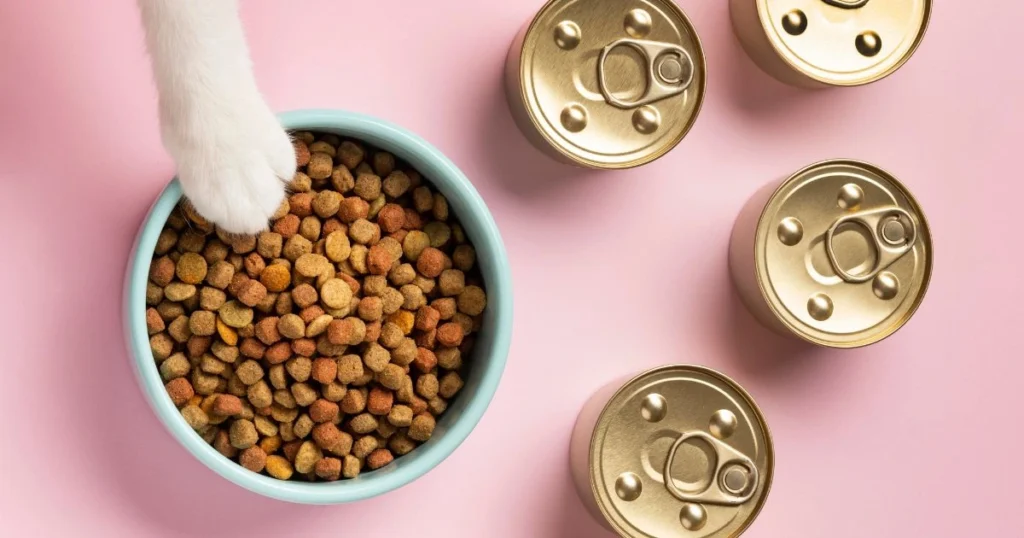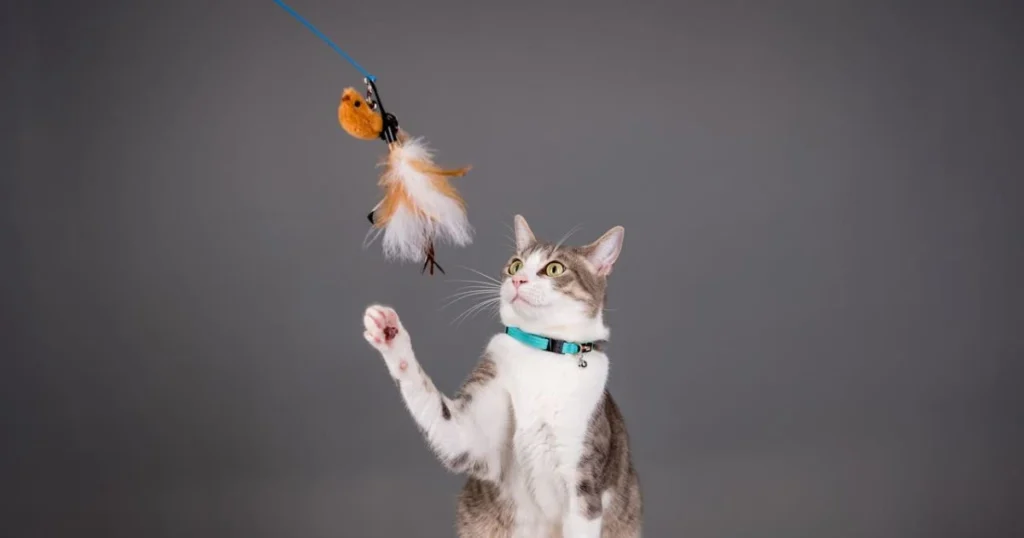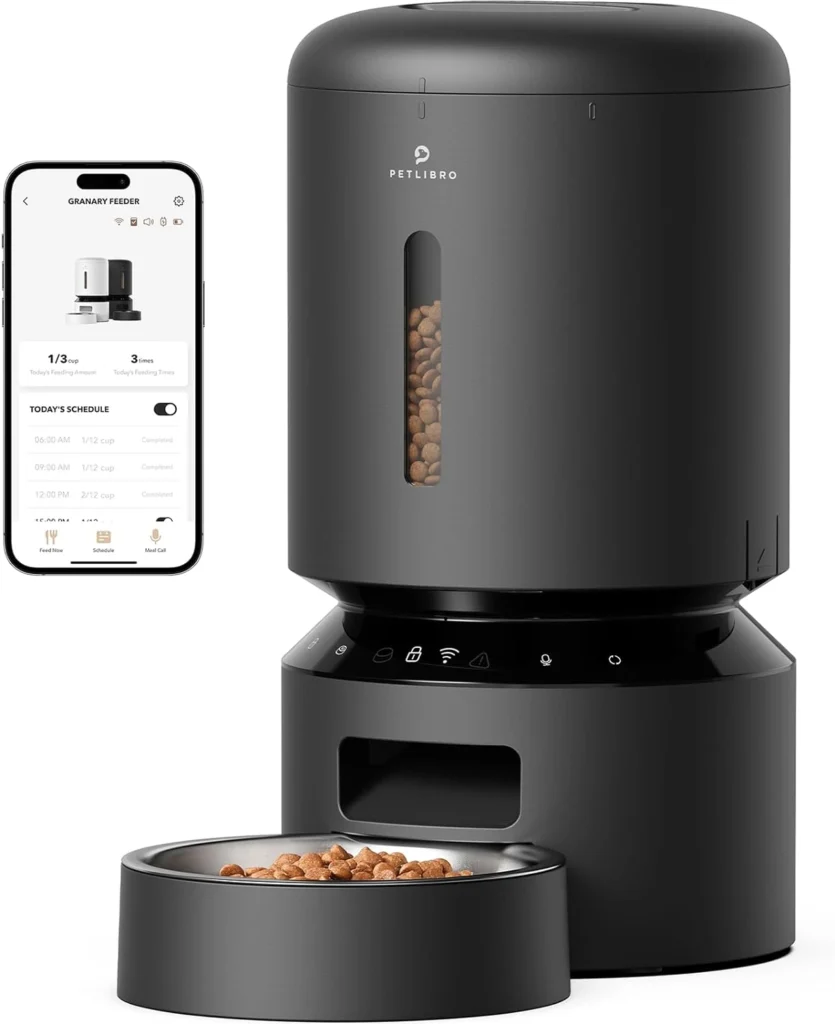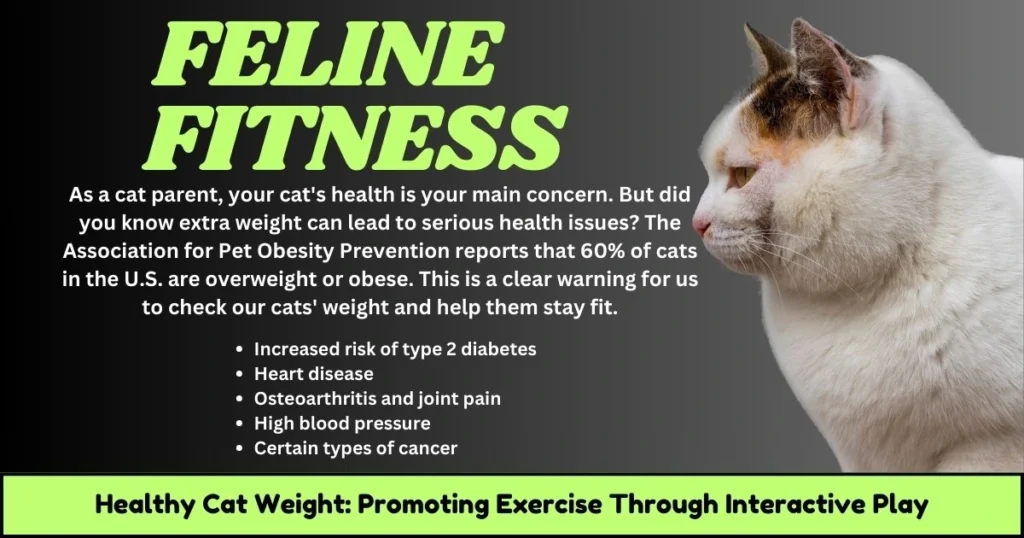As a cat parent, your cat’s health is your main concern. But did you know extra weight can lead to serious health issues? The Association for Pet Obesity Prevention reports that 60% of cats in the U.S. are overweight or obese. This is a clear warning for us to check our cats’ weight and help them stay fit.
In this guide, we’ll talk about why keeping your cat fit is crucial. We’ll also discuss the dangers of obesity and how to help your cat stay at a healthy weight. With your vet’s help and a personalized plan, you can ensure your cat lives a long, happy life without the weight problems.
Understanding the Importance of a Healthy Cat Weight
Keeping your cat at a healthy weight is key for their health. Too much weight can lead to serious health issues, like type 2 diabetes. Cats that are overweight are three times more likely to get this disease than those of normal weight.
Other health problems include heart disease, osteoarthritis, high blood pressure, and some cancers.
Risks of Feline Obesity
More than 50% of cats in North America are overweight. This can cause many health issues, such as:
- Increased risk of type 2 diabetes
- Heart disease
- Osteoarthritis and joint pain
- High blood pressure
- Certain types of cancer
These problems can greatly affect your cat’s life and how long they live. It’s important to watch your cat’s weight and work with your vet to manage obesity in cats.
Benefits of Maintaining an Ideal Weight
Keeping your cat at a healthy cat body condition score can help them live longer and feel better. It boosts their energy, activity, and overall quality of life. By creating a weight management plan with your vet, you can help your cat live a long, healthy life.
Your cat’s weight is a big part of their health. Addressing overweight cat risks early can greatly improve their long-term health.
Consulting Your Veterinarian for a Tailored Plan
Working with your vet is key for your cat’s health and weight. Before starting any diet or exercise plan, see your vet. They offer crucial advice to keep your cat healthy.
Your vet can check for health issues like hypothyroidism or diabetes that might cause weight gain. They’ll also check your cat’s body condition and find the right weight. Every cat is different, needing specific care based on age, breed, and how active they are.
It’s important to avoid sudden weight loss in cats. Work with your vet to create a safe, slow plan for your cat to get to a healthy weight. Your vet will suggest the right food and exercise for your cat’s weight loss.
“Regular wellness exams by veterinary care teams allow for close monitoring of pet weight, body condition, and dietary requirements.” – American Veterinary Medical Association
Remember, your vet is your main ally for your cat’s health. By talking to them before starting a weight program, you know your cat is on the path to a better life.
Measuring Meals and Controlling Portions
Controlling portions is key for a healthy cat diet and weight management for cats. The first step is to measure your cat’s food accurately. This ensures they get the right number of calories each day, as your vet recommends.
Using a Measuring Cup for Accurate Serving Sizes
Free-feeding can make it hard to keep track of your cat’s calories. Instead, use a measuring cup for their meals. This way, you can monitor exactly how much they eat. It helps you stick to your vet’s dietary advice.
Following Veterinarian’s Caloric Recommendations
Your cat’s calorie needs change based on age, activity, and health. Your vet can give you specific calorie advice for your cat. Following these guidelines helps manage your cat’s weight through portion control.
| Cat Factors | Calorie Needs |
|---|---|
| Kittens | More calories for growth and development |
| Senior Cats | Fewer calories, especially with medical issues |
| Unspayed/Unneutered | More calories needed |
| Pregnant Females | Increased food intake |
| Healthy Adult Cats | 25-35 calories per pound of body weight |
Using a measuring cup and following your vet’s calorie advice helps manage your cat’s healthy cat diet. It supports their overall weight management.
Choosing High-Protein, Low-Carb Cat Food
Feeding your cat high-protein, low-carb food can really help. Cats need a diet rich in animal proteins and low in carbs. This is because they are designed to eat meat.
Such foods keep your cat full longer. This means they snack less and can lose weight better. Many cat foods are now made for weight management. But, always talk to your vet for the best food for your cat.
When looking for the right food, check for:
- At least 26-30% crude protein on a dry matter basis, as recommended by the Association of American Feed Control Officials (AAFCO)
- Carbs should be no more than 10% on a dry matter basis
- A mix of vitamins, minerals, and healthy fats
Brands like Nulo Freestyle, Farmina N&D, and Weruva are good for weight management. They use chicken, salmon, or lamb as main ingredients. These foods also have fiber to keep your cat full.
“Cats are obligate carnivores, meaning their bodies are adapted to a diet high in protein and low in carbohydrates. High-protein, low-carb cat foods can help your feline friend maintain a healthy weight.”
Remember, the price of cat food doesn’t always mean it’s better. Talk to your vet and read labels to find good, affordable food. This way, you can keep your cat healthy and happy.

Healthy Cat Weight: Promoting Exercise Through Interactive Play
Keeping your cat at a healthy weight is important. They need regular exercise to stay healthy. Cats sleep a lot, but they still need 30-60 minutes of activity each day.
Engaging Your Cat with Toys and Playtime
Playing with your cat is a great way to get them moving. Toys like feather wands and laser pointers are perfect. They make your cat’s hunting instincts come alive, leading to lots of fun activity.
Setting aside time each day to play with your cat is key. It keeps them active and strengthens your bond.
Introducing Climbing Structures and Scratching Posts
Adding climbing structures and scratching posts is also good for your cat. These activities help them stay active. They encourage natural behaviors like climbing and scratching, which are good for their muscles and flexibility.
Place these structures around your home to keep your cat active all day. The goal is to get them moving more, not to train them for a marathon. Interactive play and environmental enrichment help your cat stay healthy and happy.
| Activity | Recommended Daily Duration |
|---|---|
| Dog Exercise | 20-30 minutes of aerobic exercise |
| Cat Exercise | 15-20 minutes, broken into 2-3 sessions |
“Most pets can achieve their ideal weight within six to nine months, according to Dr. Katie Childers, a veterinarian.”
Limiting and Substituting Treats
Treats can add too many calories to a cat’s diet. It’s key to limit and swap them out for a weight-loss plan. Choose low-calorie or zero-calorie treats like lean chicken bits. Make sure treats make up less than 10% of your cat’s daily calories.
You can also use your cat’s regular kibble as a treat. This way, you avoid extra calories and keep them happy.
Low-Calorie Treat Options
- Cooked, unseasoned chicken or turkey
- Freeze-dried meat or fish
- Carrots or green beans
- Plain, unsweetened yogurt
Using Kibble as a Treat
Using kibble as a treat is a smart move. It lets your cat enjoy something tasty without extra calories. This keeps them within their calorie limit and still gets them a treat now and then.
| Treat | Calories (per piece) |
|---|---|
| Chicken Breast | 12 calories |
| Freeze-Dried Tuna | 5 calories |
| Carrot Slices | 3 calories |
| Dry Kibble | 10-30 calories |
By choosing these low-calorie treats and using kibble as rewards, you can prevent cat obesity. You’ll keep your cat at a healthy cat weight while still giving them treats.

photo by Valent Lau
Monitoring Progress and Celebrating Milestones
Keeping your cat at a healthy weight is a long-term effort. It’s vital to watch your cat’s progress with your vet’s help. This way, you can keep track of their cat body condition score, weight, and health. It ensures they stay on the right path to wellness.
It’s important to weigh your cat regularly, especially at different life stages. Kittens need frequent checks to make sure they’re growing right. Senior cats might need more attention because they can lose weight unintentionally. Always use scales made for cats and calibrate them before each use for accurate readings.
When your cat hits important milestones, like reaching their ideal weight or having more energy, celebrate. These moments of success boost your efforts and keep you both motivated. They remind you of the journey to long-term weight management for cats.
Think about using pet fitness trackers to keep an eye on your cat’s activity. Encourage them to move with fun play, climbing structures, and appealing scratching posts. A cat-friendly environment that encourages movement supports their cat body condition score and overall health.
“Regular check-ins with your veterinarian and a focus on slow, steady progress are key to maintaining a healthy cat weight in the long run.”
The journey to a healthier cat may have ups and downs. But by staying alert, adjusting your plan as needed, and celebrating milestones, you can help your cat thrive. They’ll enjoy a fulfilling life.
Conclusion: Maintaining a Healthy Cat Weight for Overall Wellbeing
Keeping your cat at a healthy weight is key for their long-term health and happiness. Work with your vet to control portions, choose the right food, and encourage exercise. Limit treats to help your cat stay fit and active.
Being consistent and patient is important for a healthy cat weight. A fit cat has a better life and fewer health problems. They avoid issues like diabetes and heart disease.
Always seek your vet’s advice on keeping your cat healthy. They can set a weight goal, plan a diet, and check for health issues. Together, you can ensure your cat’s wellbeing and a longer, happier life.
FAQ
What percentage of cats in the United States are overweight or obese?
About 60% of cats in the United States are overweight or obese, says the Association for Pet Obesity Prevention.
What are the potential health risks associated with feline obesity?
Obesity in cats can lead to serious health problems. These include diabetes, heart disease, and arthritis. They are three times more likely to get type 2 diabetes than normal-weight cats.
Other risks include high blood pressure, osteoarthritis, and some cancers.
Why is it important to consult a veterinarian before starting a weight-loss plan for my cat?
It’s key to talk to your vet before starting a weight-loss plan. They can help figure out your cat’s ideal weight. They also ensure the plan is safe and effective for your cat’s health.
How can I accurately measure my cat’s food portions?
Use a measuring cup to make sure your cat eats the right amount of food. This is what your vet recommends. It might take some math, but it’s crucial for losing weight.
What type of cat food is best for weight management?
Cats need a diet high in protein and low in carbs. This is because they are obligate carnivores. Foods high in protein and low in carbs help them feel full longer, which aids in weight loss.
How can I encourage my cat to be more active?
Aim for 30-60 minutes of playtime each day. Use toys like feather wands and laser pointers for fun. Also, provide climbing structures and scratching posts to keep them active.
How can I limit and substitute treats for my cat’s weight-loss plan?
Choose low-calorie or zero-calorie treats, like lean chicken. Make sure treats are less than 10% of your cat’s daily calories. You can also use their regular kibble as treats to avoid extra calories.
How can I monitor my cat’s progress and celebrate milestones?
Keep a close eye on your cat’s weight and health with your vet. Celebrate their progress, like reaching their ideal weight or more energy. This keeps you motivated and shows your efforts are worth it.

PETLIBRO Automatic Cat Feeder, 5G WiFi Automatic Dog Feeder with Freshness Preservation, 5L Timed Cat Feeder with Low Food Sensor, Up to 10 Meals Per Day, Granary Pet Feeder for Cats, Black


Please tell me more about this. May I ask you a question?
yes why not !!!
Thank you for your articles. I find them very helpful. Could you help me with something?
Thank you for your articles. They are very helpful to me. Can you help me with something?
I know this if off topic but I’m looking into starting my own blog and was curious what all is needed to get setup? I’m assuming having a blog like yours would cost a pretty penny? I’m not very internet smart so I’m not 100 positive. Any tips or advice would be greatly appreciated. Many thanks
Thank you for the auspicious writeup. It in fact was a amusement account it. Look advanced to more added agreeable from you! However, how can we communicate?